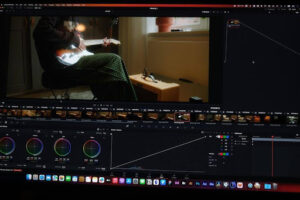We live in a world where data is everywhere. Businesses, schools, governments, and even social media use data to make decisions and tell stories.
But raw data can be hard to understand. It becomes useful only when we can see what it means. This is where data visualization helps. One of the best tools for showing data clearly is the bar chart. It is simple, effective, and easy to read.
In this article, we will look at how bar charts help people understand data better.
What Is a Bar Chart?
A bar chart is a type of graph that shows information using bars. Each bar represents a category, and the size of the bar shows how much or how many. If the bar is tall or long, the number is bigger.
If the bar is short, the number is smaller. The bars can go up and down or side to side. You often see bar charts in school reports, business meetings, and news articles. They are popular because they make data easy to see and compare.
Bar Charts Make Data Simple
Sometimes data comes in the form of long tables or many numbers. Looking at rows and rows of numbers can be confusing. A bar chart can take that same data and turn it into something people can understand quickly.
You don’t have to read every number. Just by looking at the bars, you can see which item is the largest, which is the smallest, and how they relate to each other. Bar charts make complex data easier to understand for everyone.
Easy to Compare Different Categories
Bar charts are great when you want to compare different items. For example, if you want to see which product sold the most in a month, you can use a bar chart. Each product gets its own bar, and you can see right away which bar is the tallest.
This tells you which product sold the most. The shorter bars show the products that did not sell as much. This makes it easy to see the differences between products without doing a lot of math.
Helpful for Showing Change Over Time
Bar charts are also good for showing how things change over time. You can make a bar for each year, month, or week. Then, you can look at the bars to see if the numbers are going up or down.
This is helpful for tracking sales, population, or other kinds of growth. It is also useful for showing change when there are only a few time points. A bar chart can make trends easy to spot, even if the data is not very detailed.
Strong Visual Impact
One reason people like bar charts is because they are easy to see and understand. Our eyes are good at comparing shapes and sizes. When we see one bar is taller than another, we know that number is bigger. This makes bar charts a strong tool for communication.
You can use colors to make them even clearer. For example, red can show danger or loss, while green can show growth or success. The visual impact of a bar chart helps people pay attention and remember what they see.
Types of Bar Charts
There are many ways to design a bar chart, depending on what you want to show. You can make a simple chart with one bar for each item. If you want to compare more than one thing at a time, you can put bars next to each other in groups.
If you want to show how different parts make up a whole, you can stack the bars on top of each other. You can also turn the chart sideways if the labels are too long.
Finding Patterns in Data
Bar charts are useful for finding patterns in data. For example, if you look at a chart of sales by month, you may notice that sales always go up in December. That tells you something important about shopping habits.
These kinds of patterns are easier to see with a bar chart than with a table of numbers. Patterns help people make better decisions, plan for the future, and understand what is happening in their business or research.
Great for Presentations and Reports
When you need to share data with others, a bar chart is often the best choice. It helps you tell a clear story. You can show the most important information in just a few seconds. This is helpful in meetings, reports, and classroom projects.
A good bar chart can help you explain your point, support your ideas, and keep your audience interested. People remember images better than numbers, so a strong bar chart can leave a lasting impression.
Easy to Understand for Everyone
One of the biggest strengths of bar charts is that anyone can understand them. You don’t need special training to read a bar chart. Even young children can look at a bar chart and understand which bar is bigger.
Bar charts are also good for people who may have trouble with reading or math. They use simple shapes and sizes, and the labels are easy to follow. This makes bar charts a good choice when you want to share information with a wide audience.
Tools to Create Bar Charts
Creating a bar chart is now easier than ever. You can use software like Excel or Google Sheets, which have built-in chart tools. There are also many websites and apps that help you create charts with just a few clicks. These tools let you type in your data, choose your chart type, and change the colors or labels.
Using a bar graph creator can help you make clean, professional charts in less time. This is helpful for students, teachers, business people, and anyone who works with data.
All About Bar Charts in Communicating Data Insights
Bar charts are a simple and effective way to show data. They help people quickly compare values and spot trends. The visual layout makes complex information easier to understand.
Bar charts work well for both small and large data sets. Overall, they are a powerful tool for clear and quick data communication.
Looking for more tips and ideas? We’ve got you covered. Check out some of our other posts now.







Be First to Comment